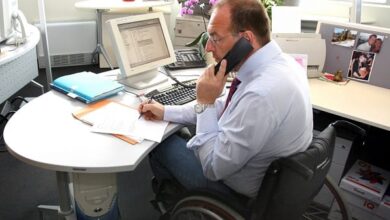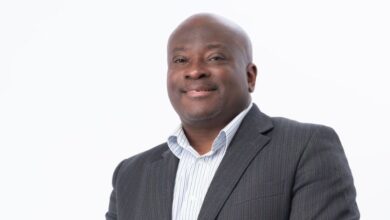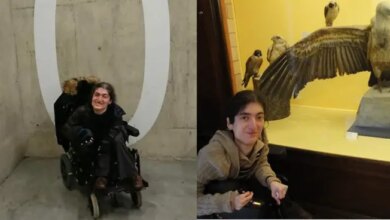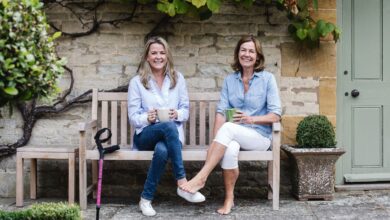New tools open up world to big-spending population with disabilities
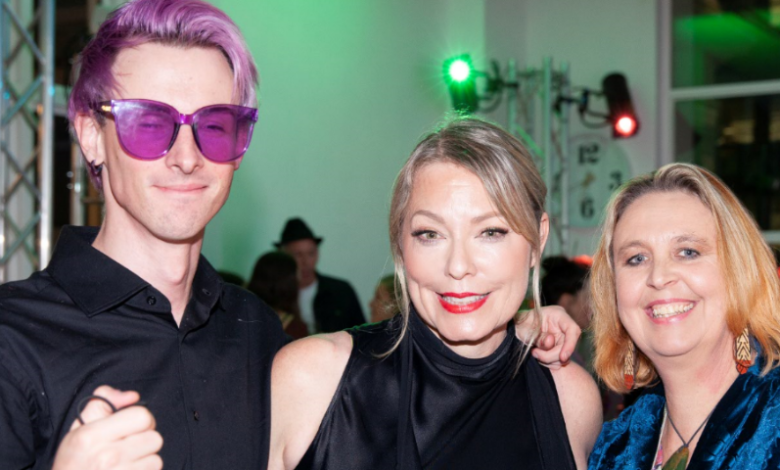
A dragon’s den initiative has backed 13 entrepreneurs developing tools to improve access to life for the rapidly-growing disabled population.
Ari Kerssens has a complicated relationship with art.
He was always drawn to personal expression, working for years as a makeup artist, experimenting with a rainbow of hair colours and the owner of a self-described ‘out there’ wardrobe.
But something made him feel shut out of the world of art.
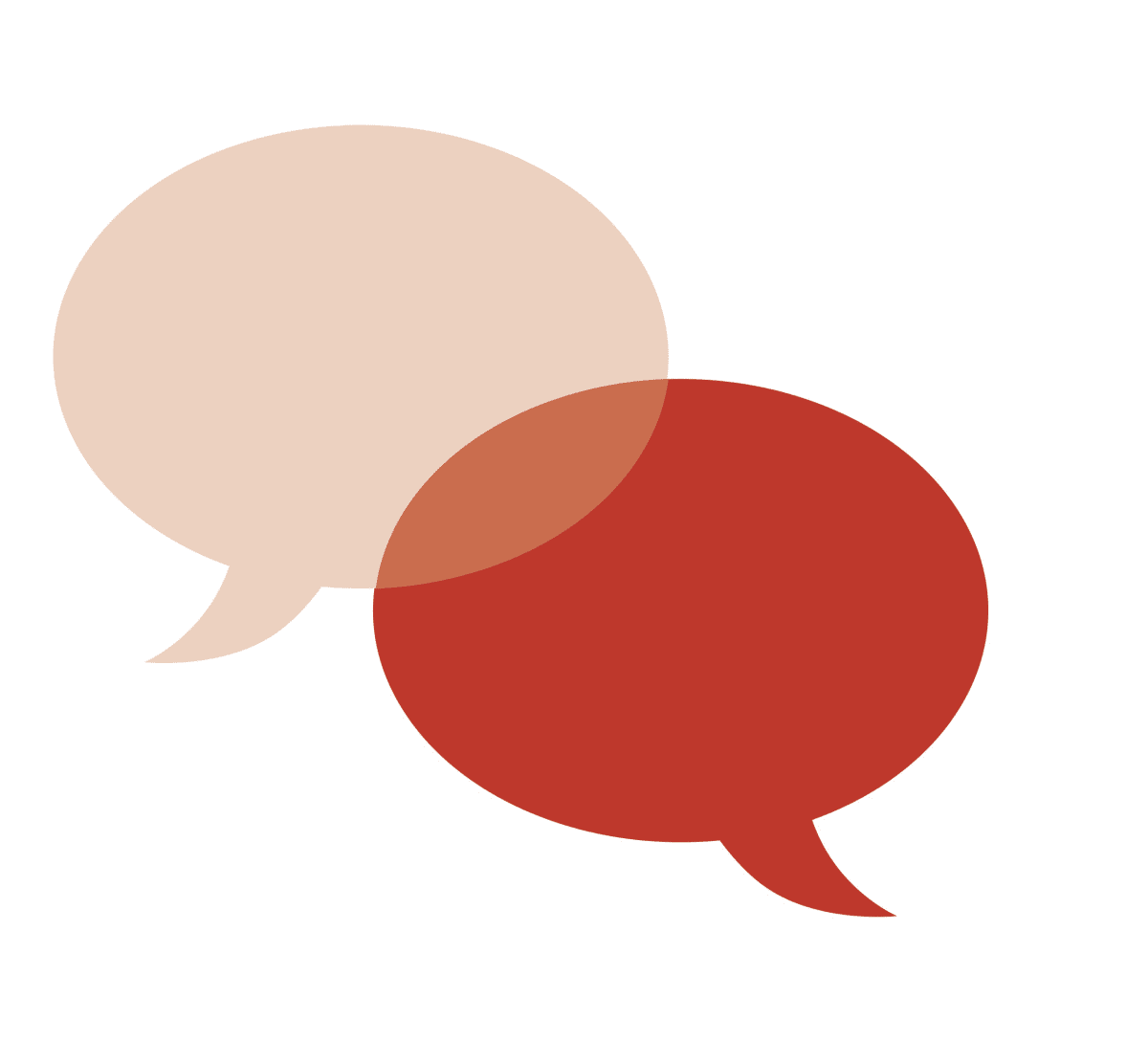
Short-sighted since birth, he lost the majority of his sight at the age of 19.
He could focus in on parts of a piece of art, but he couldn’t take in the whole.
“Visual art was always whatever to me,” he said. “I didn’t realise it was because I just didn’t have access.”
His ambivalence changed when a friend accompanied their piece with an audio description – allowing Kerssens to experience the art in its entirety for the first time.
“I realised the power that augmenting visual art with non-visual elements had for both creative expression and accessibility,” he said. “And there’s also the downstream effect of having more people think they aren’t precluded from being an artist just because they are disabled.”
Now he’s on a mission to spread the idea that visual art can harness the power of the non-visual to be accessible to everyone.
He has been spurred on taking part in an initiative bringing 13 mainly disabled entrepreneurs together to give life to ideas not designed for, or to, disabled people – but with them.
Legally-blind disability advocate Minnie Baragwanath is the founder of the Global Centre of Possibility, who has launched the initiative in conjunction with Auckland University of Technology.
Since she lost her sight at the age of 14, she has pioneered a number of disability or access sector enterprises such as Be. Lab, which she has run since 2011 with the hope of creating a 100 percent accessible New Zealand.
Baragwanath said the access sector was hugely overlooked.
With the number of Kiwis and visitors with access needs rising from 25 to 30 percent by 2030, the ‘yellow dollar’ – spending by people with access needs – was $12 billion annually.
That’s the rough equivalent of New Zealand’s annual exports to China.
And globally, access markets are valued at $13 trillion.
But Baragwanath said involving people with access needs in the design and decision making process of harnessing this sector was paramount.
“If the access community isn’t included in decision making, we will be designed out,” she said.
This had been keenly felt during the last year.
“Our pandemic response didn’t factor in the 25 percent of the country with access needs,” said Baragwanath.
When life in lockdown suddenly went remote and digital, not enough thought was put into making things accessible.
“When the Covid-19 site first went up it wasn’t even accessible to the blind community,” she said. “I had to rely on other people to help me collect and order groceries – I was totally dependent on other people for everything.”
She said lockdown reinforced the importance of getting people in the front and centre of design and decision making processes. “Everything goes through the digital membrane – and if you can’t access it, what do you do?”
This is why the programme has backed these 13 entrepreneurs in a kind of disabled dragon’s den, wherein they come together to explore how they can use their own experiences as people with access needs to serve that 25 percent of New Zealanders.
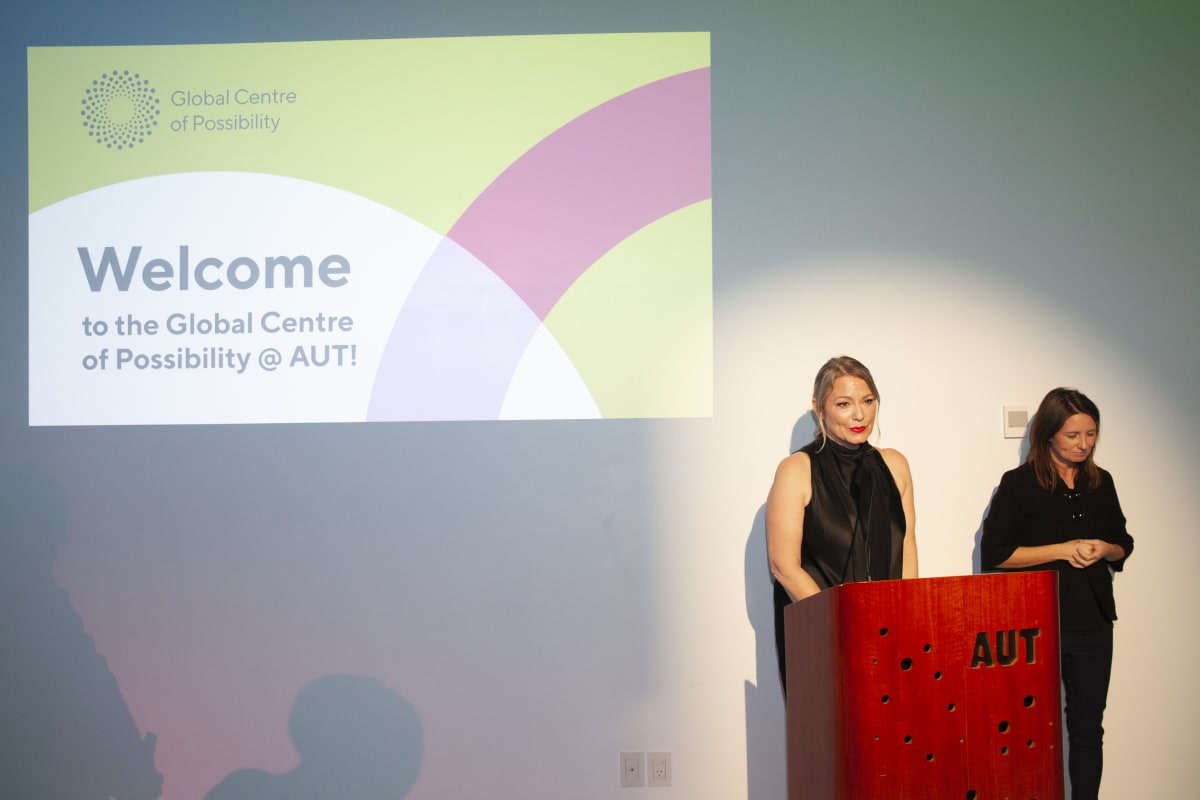
Kerssens’ plan to bring accessibility to the art world has support from Creative NZ. The project, called Sight Dependent, hopes to establish a set of accessibility guidelines for galleries across New Zealand.
Inspired by some of the world-leading accessible galleries of Europe, he said New Zealand was lagging behind.
He wanted to help bring about an environment where accessibility was the norm, rather than something extra or special.
“At the moment, a pair of headphones in a gallery with an audio description of the art would be weird and unusual,” he said. “But it should be – why is it not there?”
He wanted to move towards a culture where the odd case would be not having inclusive elements like headphones or an audio description, “a cultural norm rather than an exception.”
Kerssens said it came down to how we thought about disability as an identity-defining concept.
“The UN defines disability as something that’s not inherent in a person,” he said. “Rather, it arises through the interactions of a person with the physical and cultural environment around them that limit their full inclusion.”
But Baragwanath saidsociety didn’t necessarily look at disability this way.
“It’s entrenched – society sees disabled people as broken and not valuable,” she said. “That’s why I talk about access needs instead of disability – we’re all going to have access needs one day.”
Michael Lloyd is another participant in the programme, who will bring his perspective as a blind person with Parkinson’s disease into an area rarely aimed at the disabled community: travel.
His plan is to develop a digital platform members of the access community can use to search for accommodation they can actually use.
“We could take away the feeling of anxiety and awkwardness when travelling,” Lloyd said.
Although accommodation providers may comply with rules around accessibility, he said people in the access community knew technically accessible didn’t always mean actual accessibility.
“There could be a wheelchair ramp, but is there room at the top of the ramp to turn around?” he asked. “It might be guide dog friendly, but do you have to walk the dog 200 metres away for it to use the bathroom?”
He said people outside of the access community weren’t exposed to their exact needs, so they could find it hard to meet them.
“If you’re not in that environment yourself, you don’t know – and every disabled or injury-based need is quite specific to the person.”
The result was travel was out of reach for many disabled people. “It’s in the too-hard basket, a lot of the time,” he said.
Baragwanath said blind spots like these meant the New Zealand economy was missing out – not just on revenue, but also on the opportunity to have an “economy of integrity”.
“There’s something broken about an economy that doesn’t recognise the value and contribution of people with access needs,” she said. “New Zealand could position itself as the global centre for this.”
She compared accessibility to the environment, which had seen an increase in awareness from the business sector, especially in the realm of research and development.
“We are starting to understand things from an environmental perspective,” she said. “What does that mean if you apply it to a people perspective?”

